In retrospect, Larry Harvey’s choice of “Evolution” as the Art Theme for the 2009 Burning Man event could not have been more prescient. Not only did 2009 bring about unprecedented economic and political changes in the world, the Burning Man Project itself went through some of the most dramatic changes in its history — changes that speak directly to the evolutionary concepts of adaptation and survival in the face of adversity.
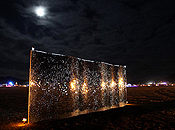 In late 2008, Harley K. DuBois, Burning Man’s Director of Community Services and its Playa Safety Council, announced her intention to resign from the Board of the Burning Man Project, an unexpected announcement after her 14 years of dedicated service as one of Black Rock City LLC’s founding members. As the Board’s members began to imagine the organization’s path forward through this impending change, a self-appointed group of senior Burning Man staffers organized a “Task Force” to undertake an in-depth look at reorganization.
In late 2008, Harley K. DuBois, Burning Man’s Director of Community Services and its Playa Safety Council, announced her intention to resign from the Board of the Burning Man Project, an unexpected announcement after her 14 years of dedicated service as one of Black Rock City LLC’s founding members. As the Board’s members began to imagine the organization’s path forward through this impending change, a self-appointed group of senior Burning Man staffers organized a “Task Force” to undertake an in-depth look at reorganization.
Not only would Harley’s departure represent a significant loss for Burning Man, but, as the Task Force and other concerned staff pointed out, the organization had reached a critical turning point where old processes struggled to keep pace with the Project’s growth and evolution.
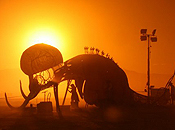 One significant leap forward was the creation of a new Executive Committee, an entirely new management body, comprised of the six Board Members and five new members, selected from members of the Senior Staff. This new body set about taking on responsibility for some agenda items that had previously been heard at the Board level; this added new voices to the table for the discussion and the creation of a new future for Burning Man.
One significant leap forward was the creation of a new Executive Committee, an entirely new management body, comprised of the six Board Members and five new members, selected from members of the Senior Staff. This new body set about taking on responsibility for some agenda items that had previously been heard at the Board level; this added new voices to the table for the discussion and the creation of a new future for Burning Man.
Several months after this work began, as some of these changes began to take root, Harley changed her course and decided she would stay on with the Burning Man project; the forward motion that had begun under this reorganization effort took on a new momentum, and Burning Man began to show internal improvements almost immediately.
During the ensuing formal reorganization, a series of cross-functional subcommittees were identified and formed to support stronger communications, more broadly-advised decision-making, enhancing operations and strategic development across the organization. The systematic reorganization has brought about extraordinarily positive changes in the functional dynamics of the Burning Man Project — including some very purposeful steps that would take us even further into the world beyond the orange trash fence in Black Rock City.
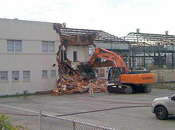 After seven years in the same San Francisco location, the Burning Man Project was forced to move its headquarters when its landlord (The University of California at San Francisco) acted upon its long-standing plan to demolish the building to make room for a Women’s and Children’s Cancer Hospital. Though we knew it was coming, we were unable to find the right location to accommodate the Project’s long and unique list of needs before this lease was up.
After seven years in the same San Francisco location, the Burning Man Project was forced to move its headquarters when its landlord (The University of California at San Francisco) acted upon its long-standing plan to demolish the building to make room for a Women’s and Children’s Cancer Hospital. Though we knew it was coming, we were unable to find the right location to accommodate the Project’s long and unique list of needs before this lease was up.
Burning Man made a quick hop into a significantly smaller (7,000 square feet, down from 20,000) temporary location in May of 2009; we planned to maintain operations there for just a year as our search for the right building continued. Many years of cultural ephemera, documentation archives, art and equipment were placed into large storage in Oakland. While core administrative staff members worked at the new “BMHQ”, most staffers were actually forced to transition in a flash from the office culture to working from home during the year, engaging in various forms of telecommuting.
 Adding further complexity, this massive undertaking took place right in the middle of the global financial crisis, at a time when the ground beneath Burning Man’s financial feet (like everybody else’s) was shifting — and while the Burning Man Accounting Department was undergoing major turnover in its personnel ranks. A new temporary Comptroller came aboard to help guide us through the challenging waters of reorganization during uncertain financial times. Facing a reasonably understandable downturn in projected ticket sales in a struggling economy, the Burning Man staff worked diligently to slash budgets and spending by 25% — no mean feat in an already-lean operation. In the spirit of radical self-reliance, the staff brainstormed and implemented a number of novel cost-saving measures that allowed Burning Man to navigate 2009 relatively well, despite the economy.
Adding further complexity, this massive undertaking took place right in the middle of the global financial crisis, at a time when the ground beneath Burning Man’s financial feet (like everybody else’s) was shifting — and while the Burning Man Accounting Department was undergoing major turnover in its personnel ranks. A new temporary Comptroller came aboard to help guide us through the challenging waters of reorganization during uncertain financial times. Facing a reasonably understandable downturn in projected ticket sales in a struggling economy, the Burning Man staff worked diligently to slash budgets and spending by 25% — no mean feat in an already-lean operation. In the spirit of radical self-reliance, the staff brainstormed and implemented a number of novel cost-saving measures that allowed Burning Man to navigate 2009 relatively well, despite the economy.
And yet, despite all these dramatic changes and challenges, the feedback we’ve received was largely convinced that Burning Man 2009 the best yet — and from the Project’s standpoint, the event itself went more smoothly than ever, too.
Burning Man’s Department of Public Works (DPW) was once again in fine form, and appreciated being allocated additional days on the event’s BLM permit for setup, making for a more reasonably-paced pre-event operation. This was aided by the fact that the BRC Planning Department, responding to the smaller population projection and complaints that the larger 2008 city size was too difficult for many participants to traverse, returned the city to the smaller 2007 footprint. This, combined with good playa conditions, made for smoother setup, easier travel and more playa-wide activity overall.
The reduction in city size also decreased the amount of available registered theme camp area. And unfortunately, there was a simultaneous increase in the number of theme camps attempting to register for placement and the number of campers in each camp; as a result, 130 camps were turned away to join in the first-come first-served land rush rather than being amongst the 618 pre-placed camps.
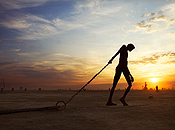 The number of art installations on playa was impacted by the sour economy, and the total 215 pre-registered artworks and 24 honorarium art projects (down from the average 40-42) reflected the first year-to-year decline in Burning Man’s history. And yet, the projects that did appear on playa were stellar, in particular the Raygun Gothic Rocketship, Fishbug, Soma, Gee-Gnome, Portal of Evolution, Key Note, the Wedge, and the Fire of Fires Temple (created by Community Art Builders of Austin, TX). More art pieces were placed on the inner playa to create a sense of critical mass, and to make them easier to reach.
The number of art installations on playa was impacted by the sour economy, and the total 215 pre-registered artworks and 24 honorarium art projects (down from the average 40-42) reflected the first year-to-year decline in Burning Man’s history. And yet, the projects that did appear on playa were stellar, in particular the Raygun Gothic Rocketship, Fishbug, Soma, Gee-Gnome, Portal of Evolution, Key Note, the Wedge, and the Fire of Fires Temple (created by Community Art Builders of Austin, TX). More art pieces were placed on the inner playa to create a sense of critical mass, and to make them easier to reach.
The Man stood atop a 25′-tall pedestal bedecked with an el-wire DNA strand, and was surrounded by a series of abstract nest-like structures of 2″x4″s forming “a tangled bank”, referencing a quote from Charles Darwin’s “On the Origin of Species”. The structure proved a difficult one to immolate on Burn night, but in the end, it succumbed to the flame in pyrotechnic glory, with the whole of Black Rock City surrounding it.
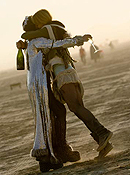 Throughout the week, there was a tangible sense of a connected population, united in creative spirit and symbiotic community. Participants shared a prevailing sentiment often during the week: everything just felt right. People seemed at ease, comfortable with their surroundings, supportive of each other, confident in their capabilities to thrive in the harsh desert environment, and full-throated in their celebration of life and an opportunity to fully express themselves. 2009 was a great Burning Man year.
Throughout the week, there was a tangible sense of a connected population, united in creative spirit and symbiotic community. Participants shared a prevailing sentiment often during the week: everything just felt right. People seemed at ease, comfortable with their surroundings, supportive of each other, confident in their capabilities to thrive in the harsh desert environment, and full-throated in their celebration of life and an opportunity to fully express themselves. 2009 was a great Burning Man year.
Nonetheless, the most notable evolution about Burning Man is happening outside of the event — participants certainly remain enthusiastic about this weeklong manifestation of our culture, but it is our observation that the Burning Man community and culture becomes less about the event itself with each passing year. Increasingly, “Burning Man” has come to be more defined by Burners taking the event’s cultural ethos with them out into the world.
This is manifested through a family of formal efforts: since 2007, Black Rock Solar has continued to sow the seeds of free and accessible solar power throughout Northern Nevada for public buildings and schools in several underserved communities; Burners Without Borders has grown to provide centralized support and resources to a wide variety of Burner-initiated volunteer efforts across the globe, improving and aiding the lives and communities of strangers far and wide; and the Black Rock Arts Foundation fulfilling its ongoing mission to fund community-based interactive artworks around the world.
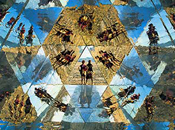 And while those formal organizations positively exemplify this culture’s ethos in action, the Burning Man Regional Network most broadly and immediately represents the manifestation of this cultural community every day of the year, in 89 locations around the globe as of 2009. Local Burner groups everywhere are formally and informally gathering and organizing around their connection through Burning Man, day to day and in thousands of ways all around the world.
And while those formal organizations positively exemplify this culture’s ethos in action, the Burning Man Regional Network most broadly and immediately represents the manifestation of this cultural community every day of the year, in 89 locations around the globe as of 2009. Local Burner groups everywhere are formally and informally gathering and organizing around their connection through Burning Man, day to day and in thousands of ways all around the world.
More and more, people who have neither been to the Burning Man event, nor have any intention to, call themselves Burners have been affected by Burning Man. This is testament to the true potential of this ever-expanding creative culture.
The Burning Man Project wishes to express gratitude and appreciation to the staff, volunteers, partners and participants who make Burning Man possible as a result of their passionate dedication to this incredible project.
Submitted by,
Will Chase

